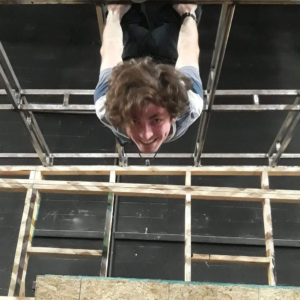What Do Students with Attention Challenges Really Think About Remote Learning?
Shari Gent, MS, NCED
Attention Magazine December 2020
Download PDF
When schools were closed this past March, most of us thought the closures would be short-lived. Surely some remedy for COVID-19 would be discovered within a few months! Teachers and students stepped off into the great unknown, laptops in hand, plucking up courage, with little training, and no preparation.
As time passed, and teachers attempted to deliver instruction with varying levels of support and both students and teachers struggled to adjust to communicating over Zoom, GoogleClassroom, Slack, WhatsAPP, and Jamboards. When the research came in showing the great experiment in online learning wasn’t as effective as everyone hoped, discouragement set in.
We’ve heard from researchers and stressed-out working parents. But what do the students themselves have to say about what might make remote learning effective for them?
As an educator and parent, I was particularly interested to learn how the students themselves felt about the experience of learning online. I wanted to connect with students from diverse age groups who were coping with ADHD and other learning challenges, in numerous locations and in school districts with multiple instructional delivery methods. I chose to personally interview students rather than requiring a written response.
I discovered that the ways in which online learning was offered varied greatly, and that student response was highly dependent on the type of instruction offered. In addition, there were some juicy tidbits suggested by students that could improve almost any remote instruction.
What the Students Said
Students from first grade through college were asked ten questions:
- Where do you engage in remote schooling?
- What is a typical structure for your school day?
- How do you keep track of your schedule?
- How do you get assistance when you need it?
- Do you find it easier or more difficult to stay focused when remote schooling?
- How do you tune out distractions in the room? Online distractions?
- What do you like best about remote schooling?
- What do you like least about remote schooling?
- How could your remote learning experience be improved?
- What do you wish your parents knew about your remote learning experience?
Eight takeaways from student responses
Students need time to socialize online and to take breaks from sitting.
Providing movement breaks during online instruction can be valuable for all ages, just as in in-person classrooms. Encourage break-out sessions where students have the opportunity share with each other, discuss concepts, and complete activities. Parents can support student need for interaction by arranging Zoom playdates outside of class time.
Elementary and middle school students benefitted from having an adult present in the room.
The adult may not need to be directly involved at all times but would optimally be available to provide technical support and answer questions. Just having an adult sit in the room often provides a cue for the student with ADHD to stay focused and on task. The adult may do his or her own work as the student works online. My own son appreciated this through high school.
Students need a regular schedule with that includes daily teacher interaction.
Children and teens with attention problems need structure. Provide a daily schedule for students to follow each day. Sending home a packet of worksheets and expecting parents to provide instruction was not effective for the students I interviewed. If possible, provide some one-to-one or small-group time with the teacher. Using the breakout function of Zoom may be an effective technique for maximizing student interaction and communication with the teacher.
Record sessions so students can access them to review later.
Not all students needed or wanted this and most did not want to listen to entire classes again. However, some students, especially at the high school and college level, mentioned that reviewing classes is helpful for checking for details in notes and preparing for exams.
Minimize the number of platforms students and families need to learn.
Platforms take time to learn, and the complexity adds to the load on executive functioning. When students have multiple teachers, as in high school and college, try to keep platforms consistent between them.
To provide additional social interaction and peer support, consider a “pod” approach when a hybrid approach is not viable.
In this setting, parents whose children are part of a “bubble” in which families have not contracted the virus work in pairs at one of their homes. This approach is, of course, dependent on negative COVID-19 test results and may not be feasible for all.
Make use of online resources to provide interactive games and activities.
Making screen sharing and use of the Zoom blackboard available to all students can go a long way to encourage engagement. Consider making use of the many online educational games for all subjects. Some of these can be played in small groups during breakout sessions.
- A few of these games are listed in “20 Best Online Interactive Math Games for Every Grade Level” https://www.weareteachers.com/the-best-online-interactive-math-games-for-every-grade-level/.
- For high school students, check out “15 Computer Games to Target the Common Core in Secondary ELA” at https://www.bespokeclassroom.com/blog/2017/3/14/15-video-games-to-target-the-common-core-in-secondary-ela.
- Many more such games are readily available.
Reach out to communicate with parents frequently.
If a student constantly turns off his video during class, immediately let parents know via email, text, or phone call. Classrooms that have a paraprofessional available might use them in this role.
The Students
 Malina, age 7, entering second grade
Malina, age 7, entering second grade
“Zoom is fun, but I want to go back to school because I miss my friends.”
Malina attended first grade at an urban public school in California. Malina tried to have a positive attitude, but clearly would rather be at school. Her mother was even less enthusiastic. Apparently, there was no actual direct instruction during their Zoom meetings with the teacher. Instead, the teacher sent home a weekly packet of worksheets for students to complete on their own. Class meetings were held twice each week to give students the opportunity to check in. Malina enjoyed these check-ins because she was able to see her friends. Each student was able to share for 30 seconds. Toward the end of the year, according to Malina’s mother, the science teacher provided 20-30 minutes of online instruction each week. The physical education teacher also offered online classes, but Malina and her mother decided to do physical activities, such as bike riding on their own during this time. Because Malina was experiencing some challenges learning to decode, her mother hired outside tutors to implement a Tier 2 (remedial) reading program.
 Leia, age 9, entering third grade
Leia, age 9, entering third grade
“I don’t like it. I like normal school.”
Leia was a second grade student in a suburban public school in California. When families were required to shelter in place this past March, Leia was attending second grade at her local public school. The first thing Leia said when I explained that we were going to talk about online school was, “I don’t like it. I like normal school.” Her biggest criticism was that she was not able to ask questions when she needed help. She explained that she was in a large class and that though she raised her hand, “The teacher never called on me.” She also commented that she had to do a lot of worksheets, particularly in math, which she described as “boring.” She mentioned that she enjoyed the online art projects her teacher offered. The thing she misses most about “normal school” is the playground. She would like to have remote learning located on a playground or with one other student in a home so she could see a friend.
 Zach, age 10, entering fifth grade
Zach, age 10, entering fifth grade
“If you finish early, you get the rest of the day off instead of having to listen to the teacher all day.”
Zach has attended a Mandarin-English bilingual school since kindergarten. His fourth-grade class followed a regular schedule each day, with classes as they were usually conducted except on Zoom. He was happy to be able to ask questions of the teachers using the chat function. Zach’s father always sits in the room doing his own work when Zach is in class. Zach was particularly annoyed that other students “close their camera and do something else instead of listening. I don’t do that because it would get me in trouble and I hate trouble.” Also, some kids annotate inappropriate pictures on the screen when the teacher is trying to teach. Zach feels strongly that his online experience could improve. “I would let teachers disable the cameras from students that close their cameras so the host can see what they are doing.” Zach wishes that other parents would realize that their kids are not paying attention.
 Savannah, age 13, entering eighth grade
Savannah, age 13, entering eighth grade
“I like both remote and in-person learning. I couldn’t do this for the rest of my life, though. It’s harder.”
Savannah attends a private middle school. She has a regular place to participate in remote learning. Her mother is always in the room during class time, although she engages in her own work. She likes both remote and in-person learning, but says remote learning is harder because she can’t play games and do activities. Savannah found learning Spanish to be more difficult online, but she found math to be easier because the teacher used the whiteboard. Savannah misses having group activities to support Spanish. She is also frustrated with the technical difficulties inherent in remote learning. “It’s harder to communicate. If the internet goes down, you get kicked out.” In addition, she finds getting prepared for class to be a challenge.
 Aidan, completed his senior year in high school this past spring
Aidan, completed his senior year in high school this past spring
“I didn’t like it, but it wasn’t that bad.”
Aidan attended a public high school in Nebraska. He completed two high school courses this past spring, British Literature and Government. Aidan loves acting. He had the major role in the school play until it was cancelled due to the pandemic. He liked that online learning made his schedule more relaxed and that he could work at home. “You can start your day off a little later and just kind of get stuff done throughout the day.” He missed having one-to-one interaction with the teacher. In person schooling allowed him to “be on the same wavelength as the teacher and on Zoom it’s a lot harder to get the whole vibe and everything.” Aidan hopes to have an acting career and is attending acting school this fall.
 Kirdan, entering college sophomore, majoring in Theater Arts
Kirdan, entering college sophomore, majoring in Theater Arts
“You get to stay in your pajamas. But I find it extremely difficult to stay focused.”
Kirdan attends a city college in Colorado and aspires to design sets for the theatre. In high school and college, Kirdan has always been an excellent student, but since he began online learning, his grades have dropped sharply. His online classes start at 9:30 AM and go until 4:00 PM every day. He enjoys the casual atmosphere and being able to relax; however, concentrating during online classes is challenging for him. Kirdan says many of his friends do well with online learning, but he has had difficulty staying focused. He tries playing soft music to stay focused. In addition, “I have a really hard time staying on schedule when I work at home versus having to go somewhere to take a class. I tend to get into a mindset of ‘I’ll do it later’ versus having set time where I have to go somewhere and have set deadlines that I’m reminded of.” Kirdan is not sure if he will return to college next semester, especially if classes are remote. Unfortunately, since there are no stage productions, he will not have the opportunity to learn about stage design. At this point, those classes are cancelled.
 Alix, entering senior of college, majoring in Environmental Studies and Studio Art
Alix, entering senior of college, majoring in Environmental Studies and Studio Art
“With a roommate it’s difficult to find a distraction-free space… I like the diversity of students in online learning.”
Alix attends an academically competitive college in Massachusetts, where she has successfully been coping with Tourette syndrome, ADHD, and coexisting mental health conditions. She has enjoyed online learning because she is exposed to a variety of students from around the world. Alix said her least liked class involved a strictly lecture format. Her favorite class assigned students to partners to work on group project in Zoom breakout sections. After completing the project, students then had to teach the class. Alix uses a headset to participate in order to filter out distractions from her roommate who also has to take classes in the same room at the same time. Alix said that she spends entire days in front of the computer and doesn’t have time to “take care of myself.” She misses being able to get exercise by walking between classes and would like more personal time to move around.
Shari Gent, MS, NCED, is an educational therapist and board-certified educational diagnostician with a focus on children with ADHD, executive function, learning disabilities, and behavioral issues. She has provided trainings about ADHD for teachers and parents throughout Northern California. She has appeared on National Public Radio, spoken at numerous conferences, and was named Educator of the Year by CHADD. She is formerly with the California Department of Education. In addition, she is the parent of a young adult with ADHD, a CHADD coordinator, a Parent to Parent trainer, and a member of Attention’s editorial advisory board.
Other Articles in this Edition
Mountain Biking and Holistic Personal Development
School-Based Services for Children with ADHD
What Do Students with Attention Challenges Really Think About Remote Learning?
Resilience in the Midst of Difficult Times
Teaching in a Pandemic: Upheavals, Adjustments, and Moving Forward
Special Education and the Pandemic
Use Chrome Extensions to Reduce Distraction and Increase Productivity
ADHD Helped Me Find Success in Pivoting a Business During the Pandemic
